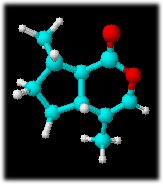The UK’s Food Standards Agency announced (August 21, 2006) that it has received an application from a food additive manufacturer to use glucosamine hydrochloride in a range of foods, including smoothies and sports drinks. The company, Cargill, makes glucosamine hydrochloride from the black mould Aspergillus niger.
But, why would they want to do this? Cargill wants to use its glucosamine as an ingredient in a range of pasteurised food products. These will include fruit juices and fruit juice products, such as tomato, tomato mixtures and fruit; smoothies, dehydrated instant drink mixes, fermented milk-based products, such as yoghurts and fromage frais, sports drinks and iced tea drinks.
Glucosamine has an almost mythical status among sufferers of various types of joint pain as a product that can supposedly ease their suffering. It gets this reputation from the fact that it is a naturally occurring amino-sugar that acts as a major building block of complex proteins called glycosaminoglycans, which form part of the structure of cartilage. As such, people with arthritis and other disorders that affect the joints hope that ingesting large quantities of this compound will somehow help their bodies to self-repair. This chain of causality has not been demonstrated.
Indeed, a recent study published in Nature Clinical Practice Rheumatology (2006, 2, 356-357) reported that:
“The publication of the results from the GAIT (Glucosamine/Chondroitin Arthritis Intervention Trial) represents a milestone for evidence-based therapeutics in OA. This large, NIH-funded, multicenter trial showed that neither chondroitin, glucosamine, nor the combination, was more efficacious than placebo for the treatment of pain in OA. The absence of efficacy was demonstrated both for the primary outcome, and for nine preselected secondary outcomes. The positive control, the COX2 inhibitor celecoxib, showed efficacy compared with placebo.”
Cargill’s glucosamine is produced through chitin sourced from Aspergillus niger, whereas all other known commercial glucosamine products are derived from shellfish, so there really won’t be any difference between their additive and the glucosamine present in a whole range of products at this time.
But, the myth of glucosamine is just that, or so it that large-scale study would suggest. A conventional diet will usually provide all the necessary precursors for this compound, so unless you’re malnourished and you’d then be experiencing other symptoms too, it is unlikely that adding glucosamine to your diet will ease your joint problems.
If the FSA sees fit to approve glucosamine hydrochloride from A. niger, UK consumers can expect to see a whole new rash of drinks with this additive purporting to help the aged and those with joint and related problems. They will not be able to make any serious medical claims about the product, but will almost certainly be able to ramp up the price nevertheless.
My advice? Stick to that healthy diet and drink plenty of tap water (if you don’t like the taste fill a jug and leave uncovered in the fridge for an hour or two before drinking to allow volatile chlorine compounds to escape.


